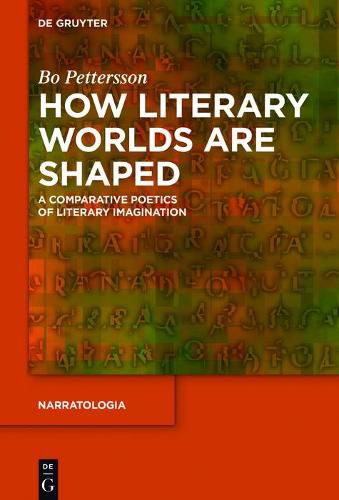Readings Newsletter
Become a Readings Member to make your shopping experience even easier.
Sign in or sign up for free!
You’re not far away from qualifying for FREE standard shipping within Australia
You’ve qualified for FREE standard shipping within Australia
The cart is loading…






This title is printed to order. This book may have been self-published. If so, we cannot guarantee the quality of the content. In the main most books will have gone through the editing process however some may not. We therefore suggest that you be aware of this before ordering this book. If in doubt check either the author or publisher’s details as we are unable to accept any returns unless they are faulty. Please contact us if you have any questions.
Literary studies still lack an extensive comparative analysis of different kinds of literature, including ancient and non-Western. How Literary Worlds Are Shaped. A Comparative Poetics of Literary Imagination aims to provide such a study. Literature, it claims, is based on individual and shared human imagination, which creates literary worlds that blend the real and the fantastic, mimesis and genre, often modulated by different kinds of unreliability. The main building blocks of literary worlds are their oral, visual and written modes and three themes: challenge, perception and relation. They are blended and inflected in different ways by combinations of narratives and figures, indirection, thwarted aspirations, meta-usages, hypothetical action as well as hierarchies and blends of genres and text types. Moreover, literary worlds are not only constructed by humans but also shape their lives and reinforce their sense of wonder. Finally, ten reasons are given in order to show how this comparative view can be of use in literary studies. In sum, How Literary Worlds Are Shaped is the first study to present a wide-ranging and detailed comparative account of the makings of literary worlds.
$9.00 standard shipping within Australia
FREE standard shipping within Australia for orders over $100.00
Express & International shipping calculated at checkout
This title is printed to order. This book may have been self-published. If so, we cannot guarantee the quality of the content. In the main most books will have gone through the editing process however some may not. We therefore suggest that you be aware of this before ordering this book. If in doubt check either the author or publisher’s details as we are unable to accept any returns unless they are faulty. Please contact us if you have any questions.
Literary studies still lack an extensive comparative analysis of different kinds of literature, including ancient and non-Western. How Literary Worlds Are Shaped. A Comparative Poetics of Literary Imagination aims to provide such a study. Literature, it claims, is based on individual and shared human imagination, which creates literary worlds that blend the real and the fantastic, mimesis and genre, often modulated by different kinds of unreliability. The main building blocks of literary worlds are their oral, visual and written modes and three themes: challenge, perception and relation. They are blended and inflected in different ways by combinations of narratives and figures, indirection, thwarted aspirations, meta-usages, hypothetical action as well as hierarchies and blends of genres and text types. Moreover, literary worlds are not only constructed by humans but also shape their lives and reinforce their sense of wonder. Finally, ten reasons are given in order to show how this comparative view can be of use in literary studies. In sum, How Literary Worlds Are Shaped is the first study to present a wide-ranging and detailed comparative account of the makings of literary worlds.